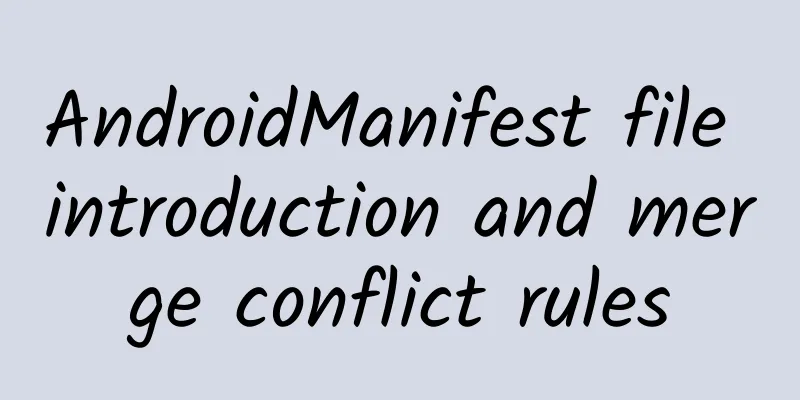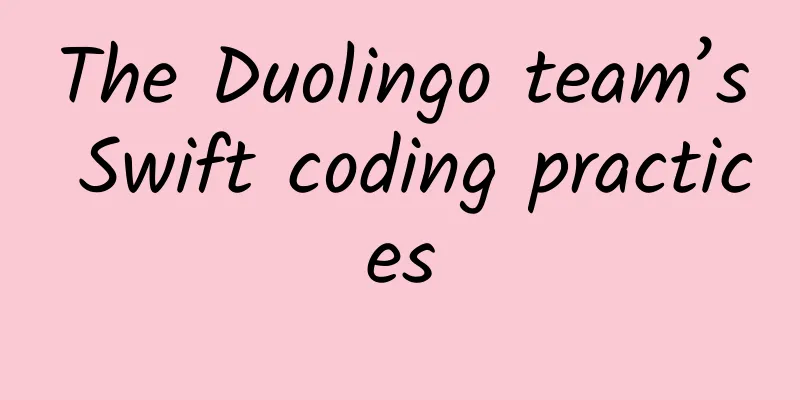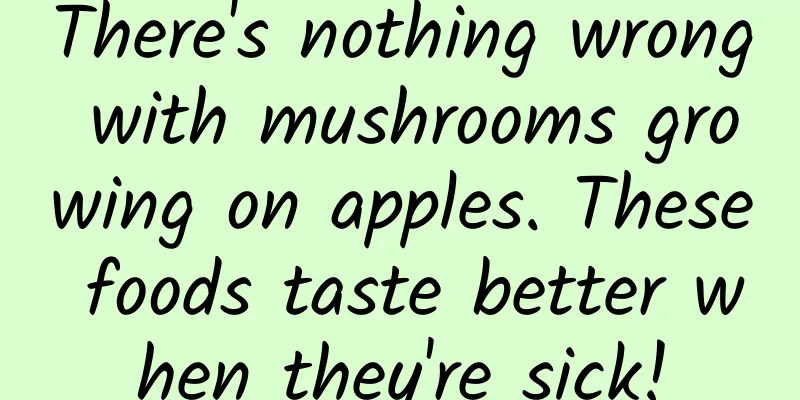AndroidManifest file introduction and merge conflict rules

Introduction to AndroidManifest FileAndroidManifest.xml is the manifest file of an Android application, which contains all the information of the application, including the package name of the application, declarations of components (such as activities, services, receivers, and content providers), permission requirements, minimum SDK version requirements of the application, etc. It is the entry file of the Android application, and the system will identify various information and configurations of the application based on this file. Typically, the AndroidManifest.xml file is located in the "app/src/main" directory under the root directory of the application. In the AndroidManifest.xml file, you can declare information such as the various components of the application, permission requirements, application icons and themes, etc. In the above example, we declared an application package named "com.example.myapp", which contains a MainActivity activity, a SecondActivity activity, a MyService service, a MyReceiver receiver and a MyProvider content provider. At the same time, we also declared that the application needs to use the INTERNET and ACCESS_NETWORK_STATE permissions, and specified the minimum SDK version of the application as 19 and the target SDK version as 33. Merge conflict rulesIn Android development, when using multiple libraries or modules, AndroidManifest.xml file merge conflicts may occur. The AndroidManifest.xml file contains the configuration information of the application. When merge conflicts occur, the system needs to determine how to handle these conflicts. The merge conflict rules are as follows:
If components are defined in different AndroidManifest.xml files and have the same priority, a merge conflict will occur. If components are defined in different AndroidManifest.xml files but have different priorities, the system chooses the component with the higher priority.
If the same permissions are declared in two AndroidManifest.xml files, but the permission declarations are different, a merge conflict will occur. If the same permissions are declared in both AndroidManifest.xml files and the permission declarations are identical, no merge conflict will occur.
For other elements (such as <meta-data>, <uses-library>, etc.), if the same element is defined in different AndroidManifest.xml files, a merge conflict will occur. When dealing with merge conflicts, you need to carefully check the merged AndroidManifest.xml file to ensure that the merged configuration meets the needs of the application and does not cause unexpected conflicts. Merge conflict markers and selectors「Merge conflict marker」:
A merge conflict selector is used to specify which version of an element should be used when there is a merge conflict. Common selectors include:
For example, you can use the following in your AndroidManifest.xml to mark and select merge conflicts: In the example above, the tools:replace tag is used to indicate that the android:label attribute should be replaced when merging, and the tools:node="merge" selector is used to indicate the default behavior provided by the manifestmerger tool. For more information, please refer to: https://developer.android.google.cn/studio/build/manage-manifests?hl=zh-cn#merge_rule_markers |
<<: iOS 17.2 released with a wave of new features
>>: Implementing Audio Graphs in SwiftUI
Recommend
Xiaohongshu marketing promotion, 13 tips for hot-selling notes!
In January 2019, the number of Xiaohongshu users ...
Regarding the "system update" of mobile phones, is it really necessary to upgrade? Let's take a look at the pros and cons
On weekdays, your phone will pop up a reminder ab...
Technology News丨World's first 35 kV kilometer-level superconducting cable put into operation in Shanghai
【Today’s cover】 Recently, as the temperature drop...
Analyze the product logic behind NetEase Yanxuan!
NetEase Yanxuan is an e-commerce platform promote...
20,000 words of pure dry goods丨The inner strength of community operation
This sentence is a line from the movie "The ...
Detailed explanation of Android's official Kotlin-First image loading library
Preface Coil is a very young image loading librar...
A star is burning! How cosmic winds are key to galaxy patterns
Illustration of an acceleration disk around a you...
Is WeChat launching live streaming to challenge TikTok and Kuaishou?
During the National Day holiday, WeChat quietly l...
After 6 years, the first perfect jailbreak of iOS 14 is released: supports iPhone 12
[[431010]] Since the perfect jailbreak in the iOS...
Another mysterious "aliens" has visited Earth! It's visible to the naked eye!
Following Comet Neowise in 2020 and Comet Leonard...
Build an e-commerce platform from 0 to 1?
The author of this article summarizes the process...
New App Promotion Techniques: Video Promotion Makes Your App Popular Overnight
Everyone on the Internet is familiar with Chai Ji...
Why are there more and more popular apps, but their popularity is getting shorter and shorter?
Changba, Moman Camera, Crazy Guess Picture, Face ...
World Turtle Day丨Did you know? Sea turtles, which have existed for more than 200 million years, are on the verge of extinction...
Sea turtles, an ancient and magical large marine ...
"Ugly tired" is all over the screen! I never thought that ugliness can also be considered a "work injury"
Reviewer of this article: Zhou Xiaobo, Doctor of ...


![A comprehensive guide to APP promotion and operation knowledge: [Exchange]](/upload/images/67cc3f486b8f5.webp)






